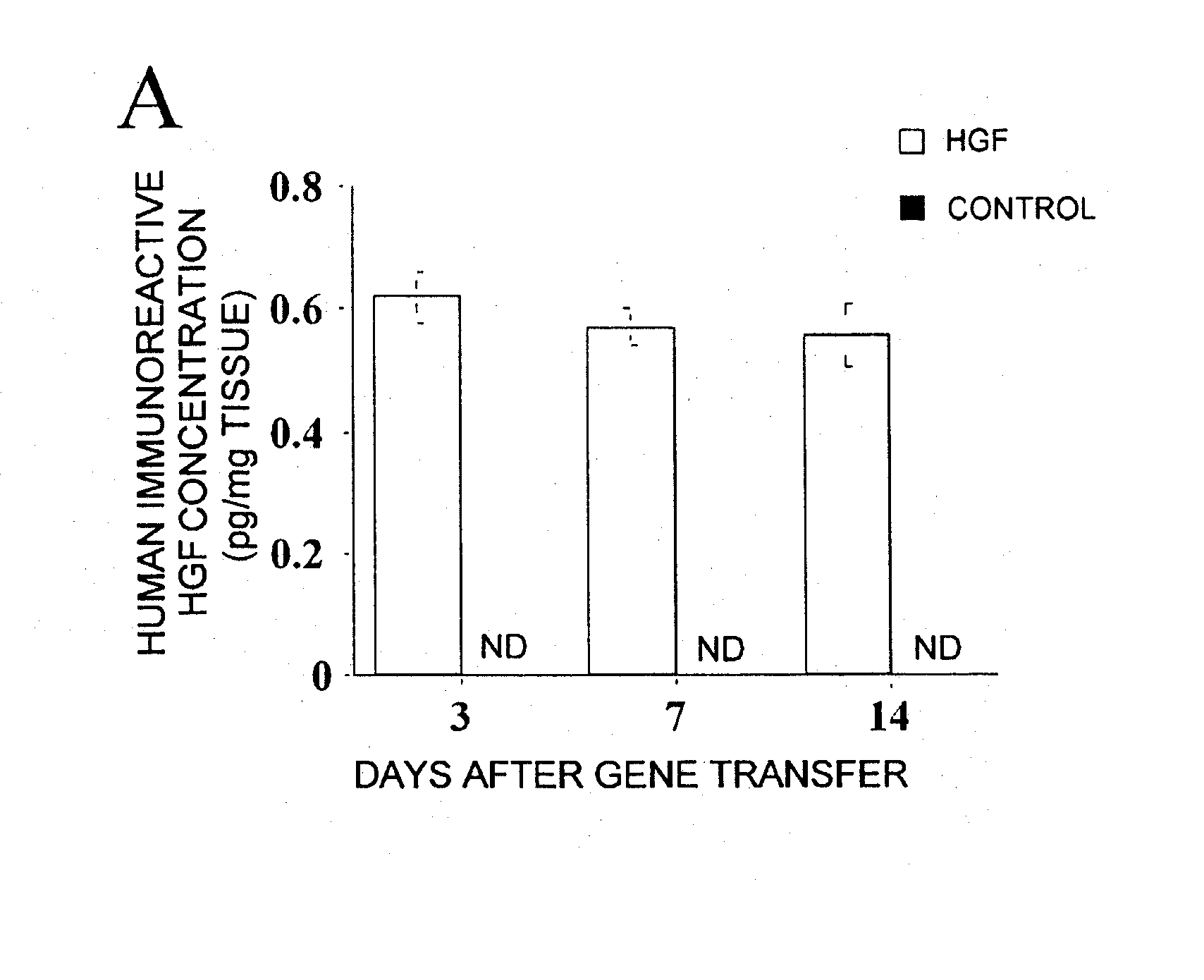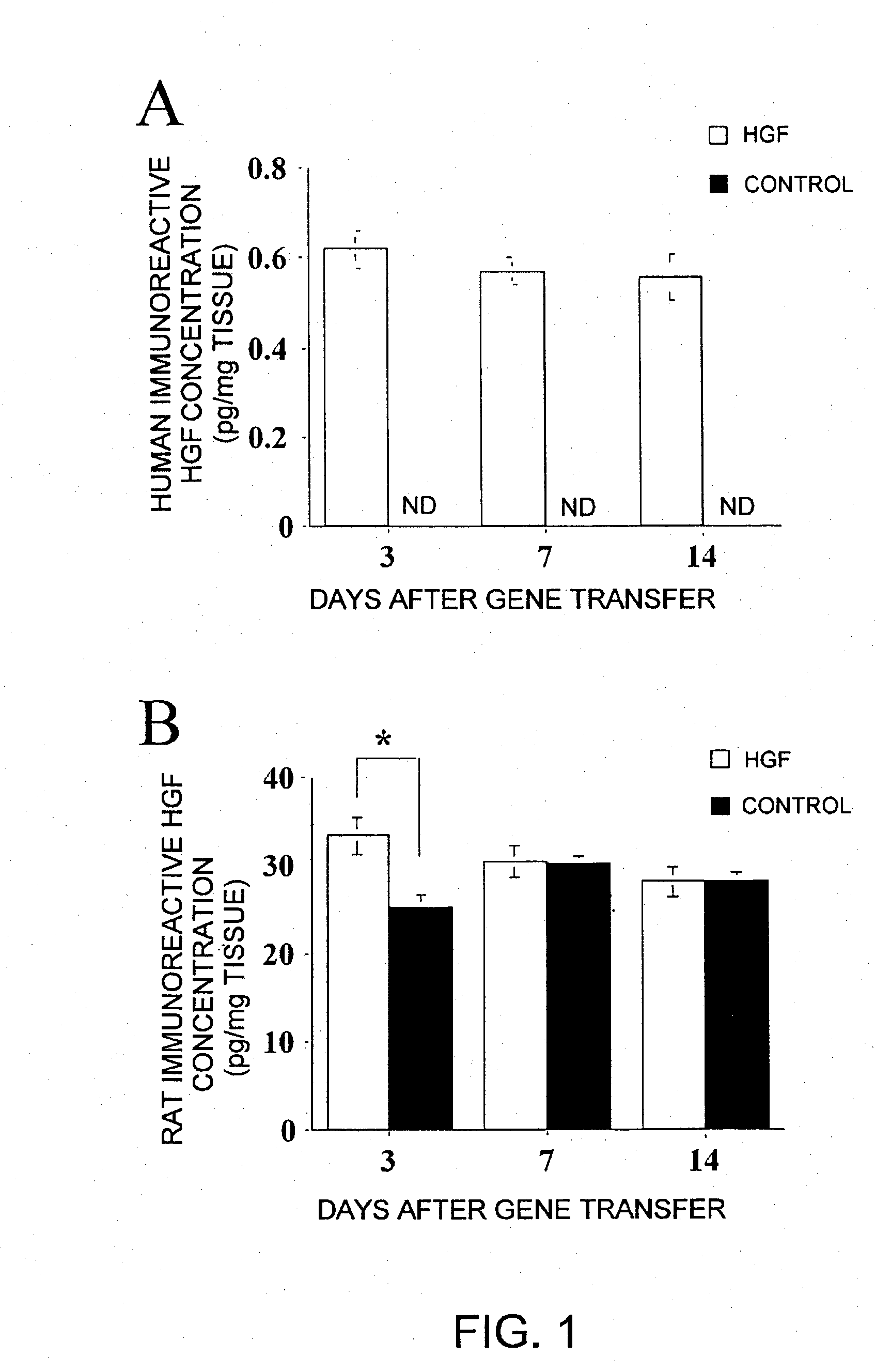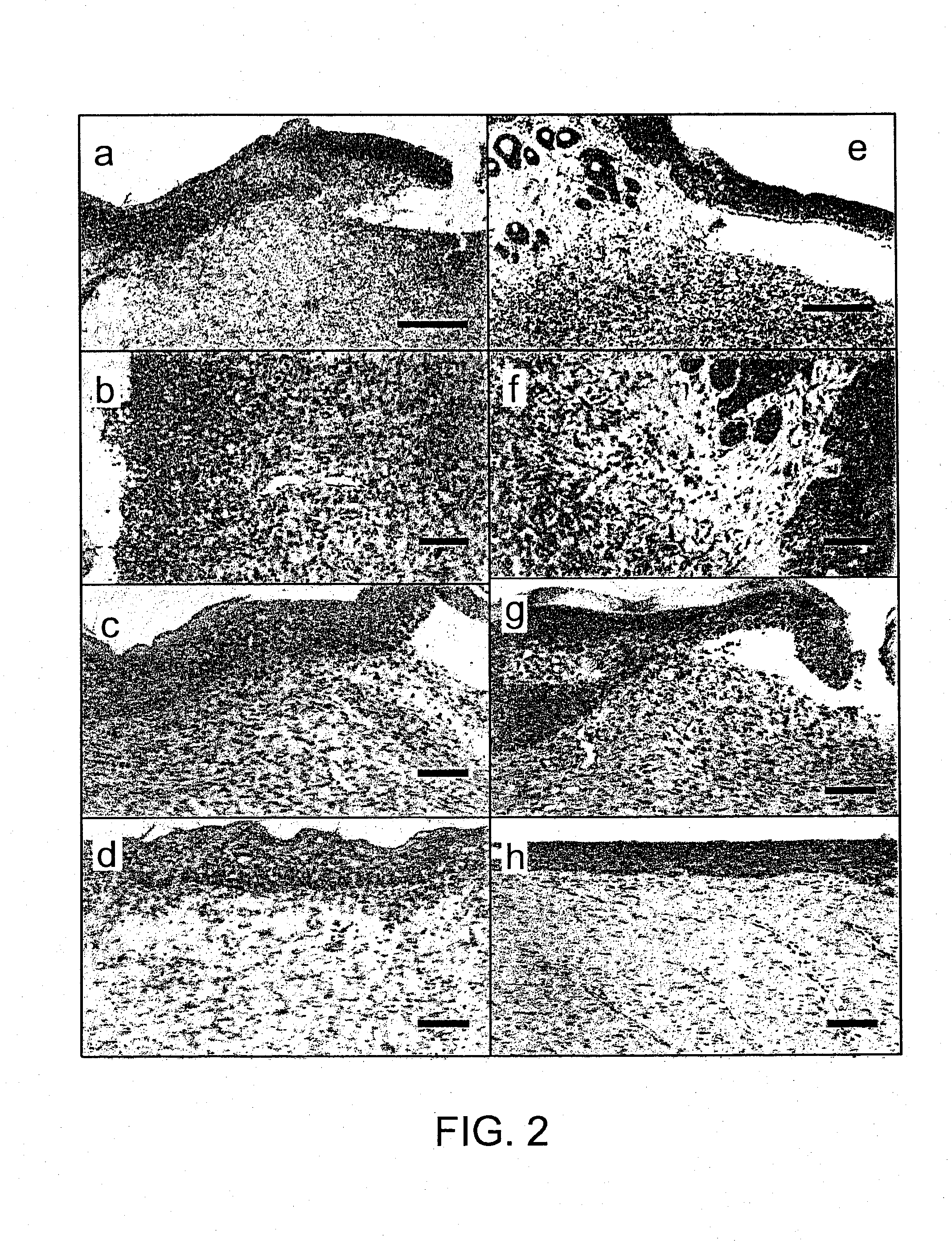Method of treating skin wounds with vectors encoding hepatocyte growth factor
a technology of hepatocyte growth factor and vector, which is applied in the direction of animal repellents, drug compositions, peptide/protein ingredients, etc., can solve the problems of difficult maintenance of blood concentration, potential danger of viral vectors, and difficulty in translocation of effective hgf dose to affected areas, so as to relieve symptoms of patients, improve blood flow, and improve the effect of blood circulation
- Summary
- Abstract
- Description
- Claims
- Application Information
AI Technical Summary
Benefits of technology
Problems solved by technology
Method used
Image
Examples
Embodiment Construction
[0066] Hereinafter, the present invention is specifically illustrated below with reference to Examples, but is not to be construed as being limited thereto
(1) HGF Protein Concentration in Wound Tissues and in Plasma
[0067] 1. Laboratory animals Sixty-five male Wistar rats, approximately eleven weeks old and weighing 310 g to 370 g, were assigned to one of two experiments, and then housed two per cage in a temperature-controlled room with a twelve-hour light-dark cycle. All rats were given commercial feed and tap water ad libitum. This experiment was performed in accordance with the Care and Use of Laboratory Animals of the National Institute of Health protocol. This protocol was approved by the Committee on the Ethics of Animal Experiments in the National Defense Medical College.
2. HGF expression vector Human HGF cDNA (2.2 kb) was inserted between the EcoRI / NotI sites of the pUC-SRα expression vector plasmid. In this plasmid, transcription of HGF cDNA is controlled by the SRα pr...
PUM
| Property | Measurement | Unit |
|---|---|---|
| pH | aaaaa | aaaaa |
| total volume | aaaaa | aaaaa |
| total volume | aaaaa | aaaaa |
Abstract
Description
Claims
Application Information
 Login to View More
Login to View More - R&D
- Intellectual Property
- Life Sciences
- Materials
- Tech Scout
- Unparalleled Data Quality
- Higher Quality Content
- 60% Fewer Hallucinations
Browse by: Latest US Patents, China's latest patents, Technical Efficacy Thesaurus, Application Domain, Technology Topic, Popular Technical Reports.
© 2025 PatSnap. All rights reserved.Legal|Privacy policy|Modern Slavery Act Transparency Statement|Sitemap|About US| Contact US: help@patsnap.com



